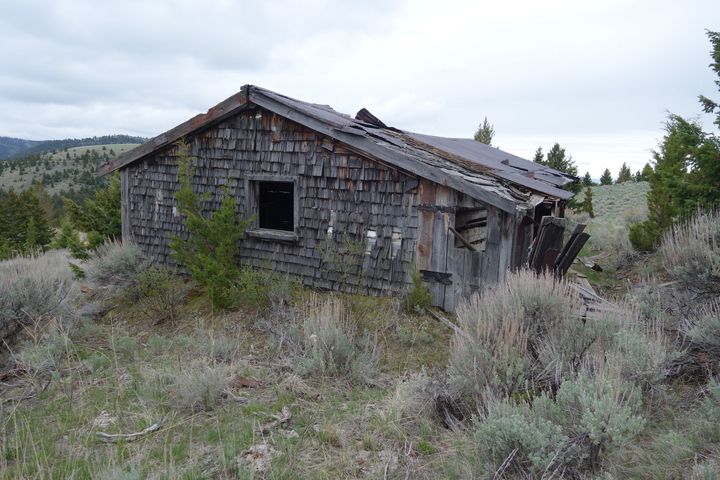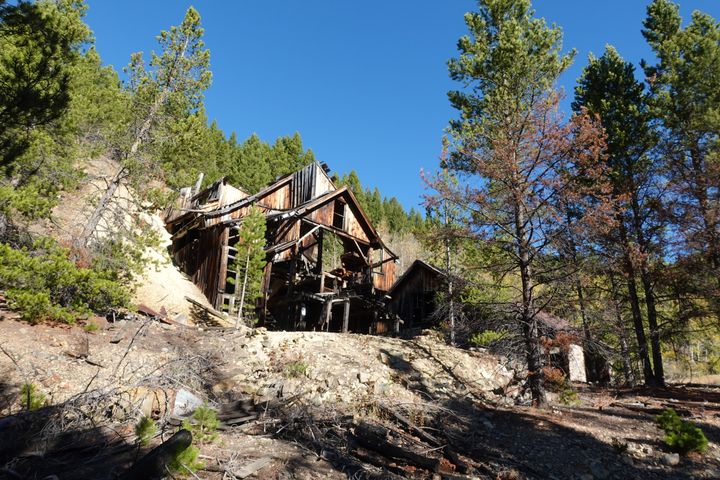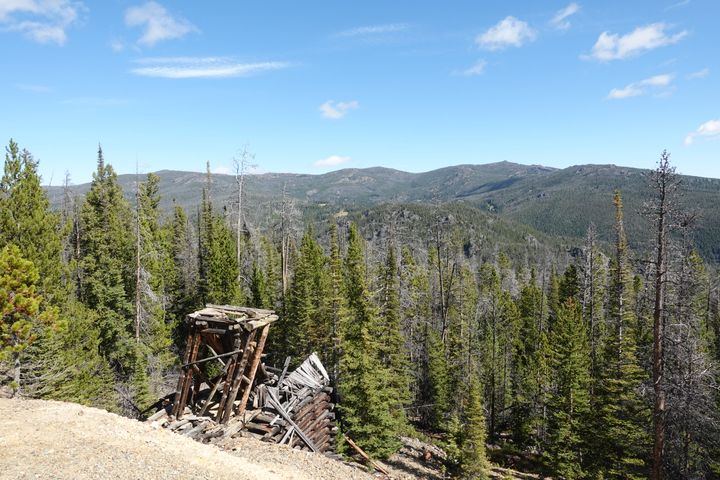During the summer of 2017, we visited a few cabins and mills in Montana. While tiring, we covered a lot of ground, and it was a great trip!
I was a bit surprised about how many mill ruins are left. This one, the Forest Rose, is almost completely ruined, but it is interesting just the same.
The state of Montana put together an excellent history of the Forest Rose Mine:
The Forest Rose Mine is located a mile north of the Wasa on a steep slope west of Dunkleberg Creek at an elevation of 5,500 feet. The mine was first located and claimed by Frank Carnes in 1884 and is on the patented Forest Rose and Acrobat claims. Other claims in the area include the Trapeze, Monitor, Bellaire and Little Mack. The upper levels of the mine were extended in the first years of the century, resulting in the production of oxidized ore. The mine was said to have produced $100,000 in silver-lead ore by 1916. When visited in 1916, the size of the dumps indicated extensive underground development through several collapsed workings. The ore consists of quartz, limonite, and a little galena and pyrite. These occur in replacement deposits in limestone on or near the axis of the Dunkleberg anticline (Pardee 1917; Popoff 1953).
When visited in 1917, the mine was being prepared for reopening. The mine recorded production almost continuously from 1918 to 1927. During World War II the Forest Rose and the Wasa mines were once again reopened. Together they produced 113,000 tons of ore, nearly the entire district production. The main adit is at an altitude of 5,150 feet and from its portal on the West Fork of Dunkleberg Creek is driven 480 feet west into the hill. From this adit are 3,000 feet of underground workings. The most important is the south or Monarch drift which is 1,800 feet long and is about 200 feet below the adit portal of the Monarch. Extensive mining was also done from a 400 feet winze. The preferred mining method employed was shrink stoping (Pardee 1917; WPA 1941; Popoff 1953).
Around 1941 the Forest Rose Syndicate built a 100-ton (rated) concentrator to work the mine’s ore. At the mill the ore was crushed to less than two inches by a 10 x 20 jaw crusher, and then ground to less than 65 mesh in a ball mill in a closed circuit with a rake classifier. The product was conditioned for lead flotation and taken to a bank of eight cells for lead concentration. The ore was then re-conditioned for the zinc circuit. Zinc concentrates were sent to the Anaconda zinc plant and lead concentrates were sent to East Helena. The mill could run 90 tons of Forest Rose ore or 65 tons of the Wasa or Monarch ore in a day (Popoff 1953).
Lode mining in the Dunkleberg mining district, located on the northwest corner of the Flint Creek Range and southeast of Drummond, has been conducted intermittently since the 1880s. The Forest Rose and several other claims were staked in 1884. Other early claims include the Mountain Chief, Pearl (or Happy New Year), Kirkendal, and Monarch (or Old Tanglefoot). In the early years of the Twentieth century a small, undocumented lead smelting operation was tried on the Pearl claim, with apparently little success. Most of the district’s production has come from the Forest Rose, Wasa and the Jackson mines. Up to 1916, about $200,000 in silver and lead had been produced in the district, about half of which was produced by the Forest Rose (Pardee 1917; Sahinen 1935; Popoff 1953).
World War I brought renewed activity to the district. The Forest Rose and a new claim, the Wasa, dominated the production with around 2,000 tons shipped. However, during the Depression, activity again ceased in the district. During World War II the mines revived and 113,000 tons of ore were produced by the combined Forest Rose and the Wasa operation. The Forest Rose Syndicate built a 100-ton flotation mill near the Forest Rose mine and controlled all the claims between the Forest Rose and the Wasa. From 1941 to 1947 this electrically powered mill treated 113,000 tons of lead-zinc ore worth $875,000 (Popoff 1953).
The ruins of the mill you see here today are those built in 1940.



